It is possible to talk about the benefits of the root parsley for a long time. This spicy plant has become the usual "guest" in our kitchens. If you have your own household plot, then definitely think about planting this fragrant plant. Parsley is unpretentious in cultivation and care. Did you know that Parsley is ahead of the lemon on the content of vitamin C? And vitamin and in it more than in carrots. What other useful properties possesses the root root, what to pay attention to when it is cultivated, we will talk in this article.
Root parsley. Plant Description
Root parsley is less popular than its "sister" - leaf parsley. Many people think that to grow such beautiful roots is problematic. It's not like that at all. Growing root parsley is much easier than the cultivation of celery, for example. Root vegetable has a spicy flavor and aroma, and in dried form is almost the main spice in the house. To learn all about the process of cultivation of this plant in open ground, it is necessary to know the features of the structure and growth of the root parsley.
- Parsley root belongs to the family umbrella and parsley family.
- Parsley root - a biennial plant.
- Parsley root can reach a maximum height of 1 meter.
- Parsley root is thickened root in the form of a spindle.
- Parsley root has an erect stem, which is prone to branching.
- Parsley root has bright green leaves are smooth and highly dissected forms which are collected in the outlet.
- At the root of parsley in the middle of summer comes the flowering period. Small flowers are bright yellow-green hue.
- Parsley in the wild is found in stony soils, slopes, areas near water.
Root parsley. A little story
- Historical homeland parsley feel warm Mediterranean countries.
- The earliest mention of parsley have come to us from Egypt. People thought that this plant grew from drops of blood killed the son of the god Osiris. parsley has been a fixture of funeral processions, from where it made wreaths and wore them on their heads.
- In ancient Egypt, Parsley has been a kind of symbol of grief at the funeral. She has littered the memorial tables.
- Rather strange role of a symbol of mourning was assigned parsley in ancient Greece. There's even a sign there, according to which to meet a man carrying a parsley, it was a bad sign.
- Only in the IX century parsley it came to Europe. Of course, it is quite frightening reputation did not do it immediately widespread plant. People for a long time avoided foliage eating, but for what have been paying attention to her roots. Indeed, for several centuries in parsley valued exclusively fleshy and aromatic roots.
- Parsley came to Russia in the XI century and was used as medicinal herbs. Here she received the following names - "Opechaiga", "Father", "Petrosilova Grass". As a vegetable culture, Parsley began to be used in Russia only in the XIII century.
- The word "parsley" translated from Latin means "mountain celery".
Root parsley. Beneficial features
What is so useful parsley? If you read this impressive list of the beneficial properties of the root parsley, then you will seriously think about its cultivation in its plot. Among the most famous and important useful qualities of this fragrant plant, the following can be distinguished:
- root parsley is unusually rich and saturated with vitamins, useful elements composition. It contains vitamins A, C, K, E, group vitamins, niacin, riboflavin, folates, choline, calcium, iron, magnesium, manganese, phosphorus, zinc, copper;
- root parsley is rich in essential oils - Limonen, Miristicin, Alpha Tuyon, Eugenol;
- the root parsley is a useful element in the diet of people suffering from diabetes. It has been scientifically proven that regular use of parsley has a beneficial effect on the regulation of blood sugar levels;
- the regular use of parsley into food contributes to the intensive removal of uric acid, which is the main factor in the occurrence of rheumatoid arthritis;
- as a result of some experiments, the anticarcinogenic effect of parsley was established due to the content of myristry in it;
- since ancient times, Parsley is used to conduct anti-inflammatory therapy. This is an indispensable assistant with strong dental pain, bruises, insect bite;
- a positive effect of parsley on a liver of a man is also known. It cleans it, contributes to the removal of toxins;
- regular use of parsley is capable of having a beneficial effect on the operation of the musculoskeletal system. Petrushka contains a large amount of calcium. Also, the parsley is known for high folic acid content, which reduces the level of special amino acid, which contributes to the appearance of osteoporosis;
- parsley is useful to people who suffer from various diseases of the urinary system. This plant is an excellent natural diuretic that helps with kidney stones and a bustling bubble, diseases of the excretory system;
- due to the fact that the parsley contains selenium, it has a beneficial effect on diseases of the cardiovascular system;
- parsley is also known for its positive impact on organs of vision;
- parsley can often be found as the ingredient in the recipes of traditional medicine for the treatment of prostatitis;
- petrushka increases the body's protective forces, has a beneficial effect on immunity. In the season of colds, it is very helpful to drink champs, teas from parsley;
- parsley root is famous for its excellent influence on the regulation of the menstrual cycle in women;
- regular use of parsley can help people suffering from diseases of the gastrointestinal tract. This plant is often found in folk recipes to get rid of the abdomen, from meteorism, from colic in the stomach, with poisoning, with indentation of the stomach;
- parsley is known for its whitening effect on the skin. That is why it can often be found in cosmetic creams, lotions, tonic. At home, you can prepare a variety of masks for leveling the tone of the skin, lightening freckles and pigment stains.
Root parsley. Photo
Root parsley. Varieties
Ranneser Range Parsley
- "Sugar". Root parsley variety is particularly loved among gardens for good yields and beautiful taste. You can eat both roots and fragrant greens. Like all varieties of root parsley, a plant is 2-year. For the first year, you can collect only greenery, and the root crops will appear in the second year of growth. The leaves are very large, can reach 50 cm long, which makes them very convenient for further bonus. Roots have a grayish hue, and the pulp is yellowish. A ripe root root can reach the length of 30 cm, the diameter of 6-7 cm and the masses up to 60 grams. Under favorable growth conditions, the root parsley of the Sugar variety will be able to please you with harvest valuable roots up to 3 kg with 1 sq.m.
Association of Root Parsley
- "Needle". The hardened parsley variety was bred in Holland. Roots are very compact form. The mass of one such cone-shaped root reaches 130-140 grams. With 1 sq. M. You can collect a little more than 2 kg of harvesting root parsley. The advantage of the variety is the ability to store it in the fresh form, freeze, process.
- "Harvest". The name of the variety speaks for itself. Garders appreciate the variety for its high yield, excellent taste. With 1 sq. M. You can assemble 3-6 kg of delicious and vitamined harvest root parsley. Parsley leaves have a beautiful green color and spicy fragrance. They are collected in the sockets, which, when cutting, grow very quickly. Ripe root roots are satisfied with large, reach the lengths of 30 cm and the diameter of 7 cm. The mass of one root can be 90 grams. White, crisp and tasty flesh. The advantage of the variety is its cold resistance and earlier appearance of foliage in the spring. Petrushka can be used fresh, dry, freeze, store fresh. The "Harvest" variety is one of the most sought after among the gardeners.
- "Good morning". The variety is known for its high yield. From the moment of landing until the harvest should pass at least 130 days. Fruits have the shape of a narrow cone and can have a mass of up to 120 grams. With 1 sq. M. You can collect almost 4 kg of root.
- "Spicy". One of the few varieties of the root parsley, which can boast of excellent taste not only the rooteplood, but also greens. Ripe root root can reach a mass of 120 grams.
- "The final". A feature of this variety of root parsley can be considered an impressive size of ripe root roots. They can achieve a mass of almost 200 grams. It has an average degree of storage.
Long-weighted grade root parsley
- Alba. Collect a good harvest of the root parsley of this variety will be approximately 160-180 days after the seed landing. Parsley grows beautiful and powerful bush. Roots reaches 28 cm long and 7 cm in diameter. The mass of one such rootpode of the correct conical form can be 230-240 grams. Grand variety. With 1 sq. M. We can collect up to 6 kg of harvest. The undoubted advantage of the Alba is the possibility of long-term storage of roots.
- "Bordovik". Another wonderful variety of root parsley, which is suitable for long-term storage of the harvest in the fresh form. Ripe root roots in appearance very much resemble carrots. Have a white flesh. One root can have a lot of up to 200 grams. Parsley foliage has a beautiful and juicy green color.
- "Berlin". From the moment of sowing, until the harvest of the parsley of this variety should pass approximately 100 days. The variety is valued for its high yield, excellent taste and the possibility of long-term storage. Ripe root root has a length of 20 cm, the form in the form of a cone. The flesh of the roots of the parsley of the variety of "Berlin" crispy, white. The advantage of this root parsley is that it can be used both in fresh form and use for freezing or any other processing.
Root parsley. Growing
Stage 1. Choose a place to land the root parsley
If you have not come across the cultivation of root parsley before, it is important to pay some attention to the choice of places for landing:
- root parsley prefers sunny places. Otherwise, rooted roots will be small and non-obvious;
- choose such a place for landing root parsley, which will be protected from drafts and strong winds;
- when choosing a place to land the root parsley, consider the fact that this plant does not welcome predecessor plants - coriander, carrots and dill;
- root parsley prefers to grow on sampling, driving, fertile soils. The plant responds perfectly on making feeding;
- root parsley should not land in too heavy and clay soil;
- root parsley should not land with the first culture after making the manure, since the root crops will strive for branching. It is better to plant it with the second culture;
- if you have decided on the landing pad of the root parsley, then it needs to be prepared. You can do this in the fall. Pull up a plot to a depth of 20-25 cm and make about 5 kg by 4 square meters. In the spring you will have almost ready for boarding the parsley. Additionally it will be possible to enrich the soil by any complex fertilizer for garden crops.
Stage 2. Choose time for landing root parsley
When to plant root parsley? You can start the selection of places for landing root parsley in the fall. At this time, you can step up the ground and make a humus there. Such preparation will make the soil as more favorable for parsley. And to start the landing most of the gardeners advise at the end of April, when the soil already warmed up the spring rays of the sun.
Stage 3. Prepare seeds to landing root parsley
Root parsley is a plant that does not differ rapid growth. Seeds parsley root before landing must be prepared. Experienced gardens have their own methods and favorite ways. Consider one of the most popular methods for the preparation of seed root parsley to landing:
- the seeds of the root parsley should be soaked in warm water for 2 days. This should be done approximately 14 days of the proposed landing;
- water should be changed 2 times a day;
- after staying in the water, the seeds should swell. They need to be rinsed after soaking and pour out a small layer on burlap or gauze for germination. The air temperature must be quite warm;
- approximately 5-6 days some of the seeds will start germinate. As soon as you noticed it, the seeds need to be placed on ice or put in the refrigerator, where they will need to hold about 12 days;
- it remains well drying the seeds so that they become bulk.
Stage 4. Prepare the soil to landing the root parsley
As already mentioned, it is possible to prepare the soil for landing in the fall. You can make about 5 kg by 1 square meter, 30 grams of potash salt, double superphosphate. In the spring you will be left to make any potash and phosphoric fertilizers, 50 cm ammonia nitrate.
Stage 5. Landing root parsley
- Perekokhana must be prepared for landing. Make small grooves with a depth of 2 cm. The minimum distance between the rows should be about 20 cm.
- Place the prepared seeds in the furrow, slightly suck the earth.
- Be sure to paint fresh landing.
- So that the moisture is not instantly evaporated, the bed can be covered with a film for a while.
If there is no winter thaw in your region, then the root parsley can be planted in autumn. Spring landings germinate in about 2 weeks.
Growing root parsley ramp
Some gardeners bypass such a way to grow root parsley. It is believed that Parsley simply does not tolerate transplant, during which the root system is always damaged that it does not give a crop. The share of truth in this, of course, is. You must understand that the transplant must be carried out strictly with the presence of a good earthy coma around the roots. If you want to try to grow root parsley in this way, then consider the following features:
- seying seeds for growing seedlings of root parsley should be started in mid-March;
- prepare a suitable container, purchase the finished soil or prepare the nutrient mixture yourself;
- grow seedlings of root parsley need at a temperature of 23-25 \u200b\u200bdegrees;
- follow the humidity. The land should not be reduced;
- after the first real leaflet appears, the temperature should be reduced to 18 degrees;
- starting from mid-May, you can transplant root parsley into open ground.
Parsley root. Care
Weeding and loosening root parsley
Like any other garden culture, the root parsley requires regular tidwing and soil loosenings. Some gardeners use a cunning technique for the first weeding. Even at the time of laying parsley seeds, the seeds of the culture of the "lighthouse" are enclosed with them. These seeds should be about 1% of the total mass of parsley seeds. As such "lighthouses" can be salad, sheet mustard. Approximately 6 days after sowing, you can see the first shoots of these "lighthouse" crops that will show the exact location of the rows. And from this point on, you can proceed to loosening and weeping.
- Weeds need to be removed regularly and timely.
- The first loosening is done not too deep - by 5-6 cm. Subsequent loosenings can already be carried out at a depth of 10-15 cm.
- To ensure the best inflow of air, it is necessary to loosen the aisle after each watering or after the rain.
Sleeping root parsley
In order to get a rich and beautiful harvest of the root parsley, shoots need to cut forward. It is necessary in order for large rootes to be enough space for growth and development.
- The first time to break the shoots of the root parsley you will need to be immediately after their appearance. Between sprouts, leave a distance of 2-2.5 cm.
- The second time you need to cut forward in about 14 days. Parsley will already grow up, crept slightly, and you can make the distance between plants in 6-7 cm.
Watering the root parsley
The root parsley is not too demanding to watering, but it is still necessary to spend it regularly. Try to follow the following recommendations:
- water the root parsley in the morning or evening;
- when watering, it is impossible to allow water to enter the rosette of the leaves, as it may be damaged;
- if the weather is too wet, rainy, then the frequency of irrigations should be cut to prevent the parsley roots;
- special attention should be paid to the watering of the root parsley is needed at the time of ripening root. This happens at the end of summer - in August;
- approximate volume of water for 1 watering - 20-25 liters per 1 sq.m.
Feeding root parsley
Root parsley spoke perfectly on making feeding. If your site is not distinguished by special fertility, then be sure to learn the issue of fertilizer. Finger the root parsley is recommended at an early stage of vegetation. For this use nitrogen-potash fertilizers:
- 1st time to feed the root parsley when it released 3-4 of the present leaflet (15 cm of ammonium nitrate);
- 2nd times feed the root parsley in about 3 weeks from the moment of the first feeding. For this, 5-7 Gy of ammonium nitrates are used, 5-7 Gy of potash salt. About 10 grams of superphosphate. The specified fertilizer volume is suitable for a plot of 1 sq.m.
When to clean the root parsley
You successfully coped with the cultivation of the root parsley and now you can begin to the most pleasant - to harvesting. When to dig up the root parsley?
- The harvesting time of the root parsley is usually at the end of September. Of course, it all depends on the climate features of your region.
- To collect the crop parsley, choose a dry and sunny day.
- Cut the greens, leaving a small pendum.
- Pull out the root of the ground and leave it a bit a little.
Storage of root parsley
If you have a good cellar, then the root parsley can be stored without any problems.
- The air temperature in the cellar must be 0-15 degrees.
- Dried root roots need to be sorted by size, remove damaged, get rid of the layer of land from the root.
- Root parsley can be stored in boxes. Make root heads up and pour them on sand.
- Root parsley can be stored in polyethylene packages. To do this, it is necessary to cut the top part and tail, place the root roots in the package. Packages can be tied up or leave open, sprinkled with a layer of sawdust.
Is it possible to grow root parsley on the windowsill or in a greenhouse
If you dream to have your mini garden on the windowsill, then pay your attention to the root parsley. The plant can easily be able to please the fragrant roots that you can add to soups, salads are right in the fresh form. If you gathered to grow an root parsley at home, then consider the following recommendations:
- for landing parsley root, it is important to choose the capacity of the correct shape and volume. If you select a conventional flower pot of medium sizes, then about 3 small roots can be placed in it;
- parsley on the windowsill can be grown in deep boxes or containers;
- the minimum distance between the plants should be 3 cm. If you planted the root parsley into several rows, then the distance between them should be about 8 cm;
- do not forget to ventilate your mini-garden on the windowsill, but do not allow drafts;
- support soil moisture with regular irrigation.
If you have a greenhouse on your site, then you can try to grow root parsley and there. Seeds in the greenhouse begin to sow at the end of January. Fluorescent lamps can be used to create additional lighting. The rules for care of the root parsley in the greenhouse are practically no different from the rules of care in the open soil. The only thing you should not forget is to ventilate the greenhouse.
Do not be afraid to grow vegetables that you have not grown earlier. Root parsley is a storehouse of useful elements. You can make valuable parsley blanks for the winter, prepare a natural seasoning, add a parsley in fresh form to different dishes. Successes in the cultivation of root parsley!

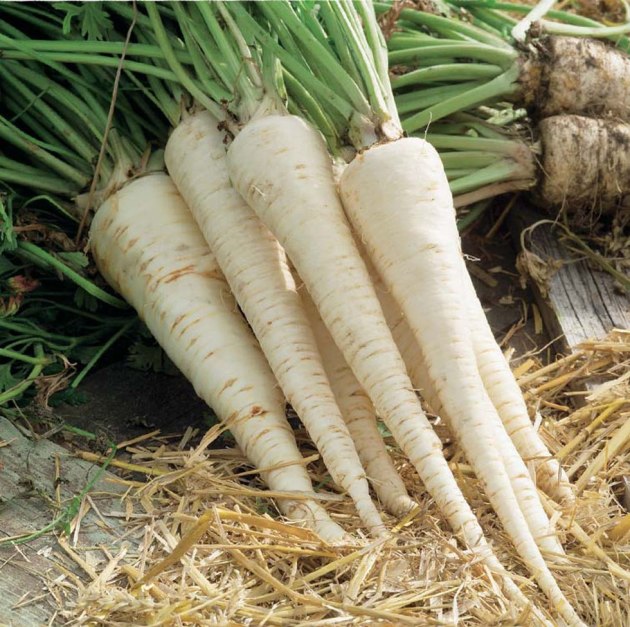
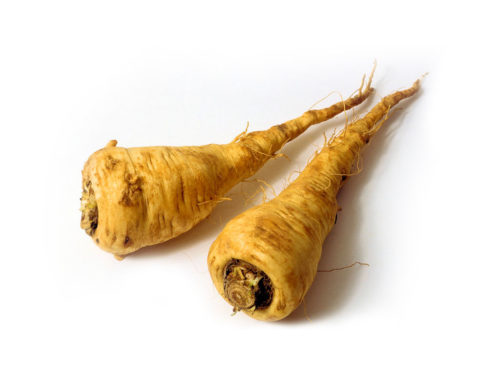
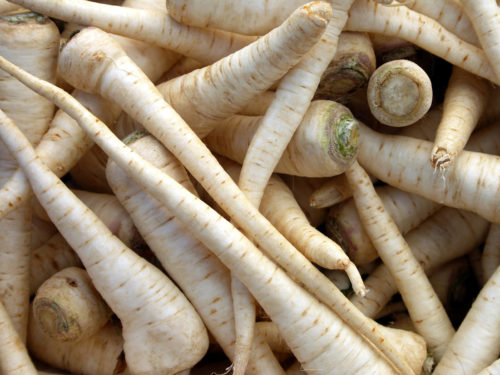
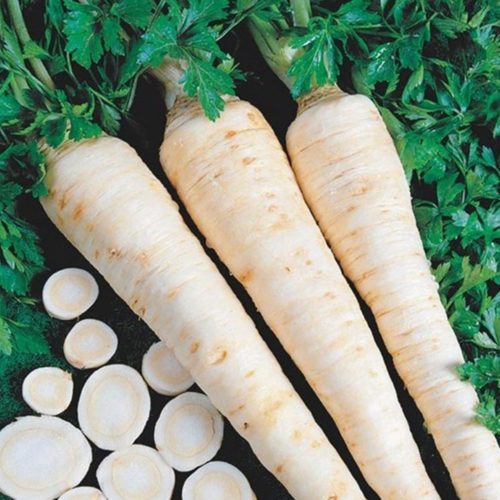
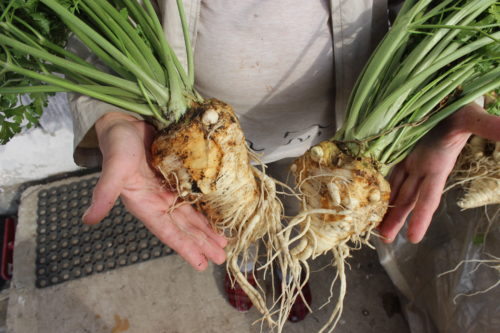

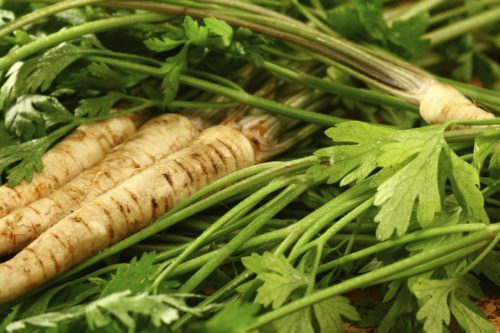
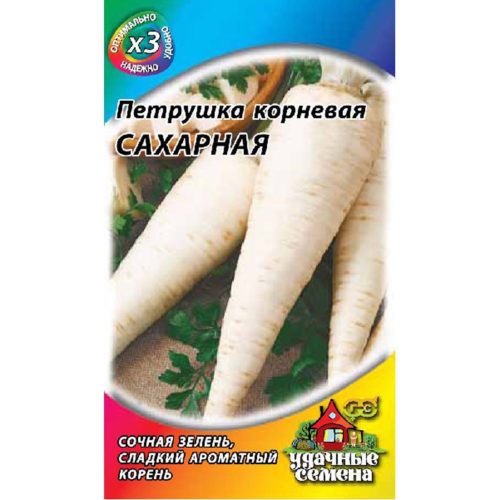
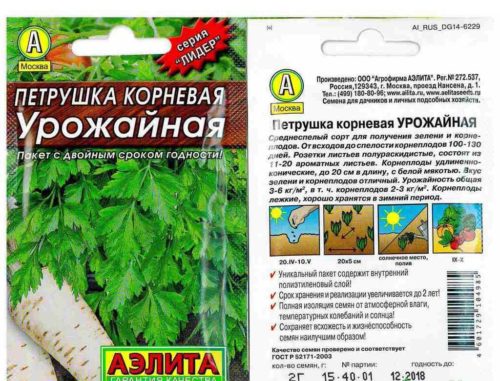
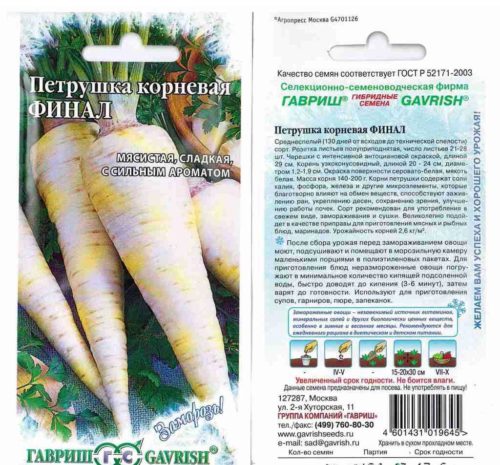


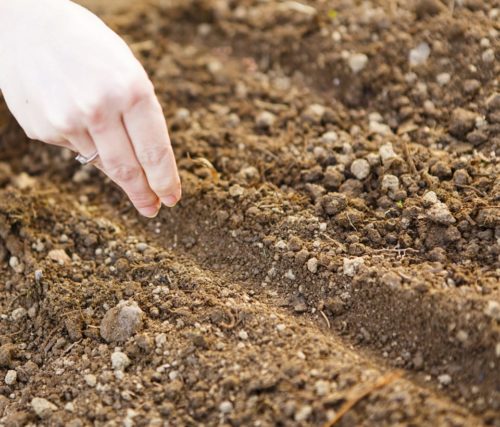

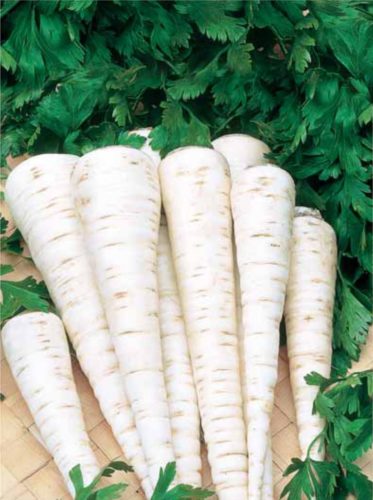












 Start a discussion ...
Start a discussion ...